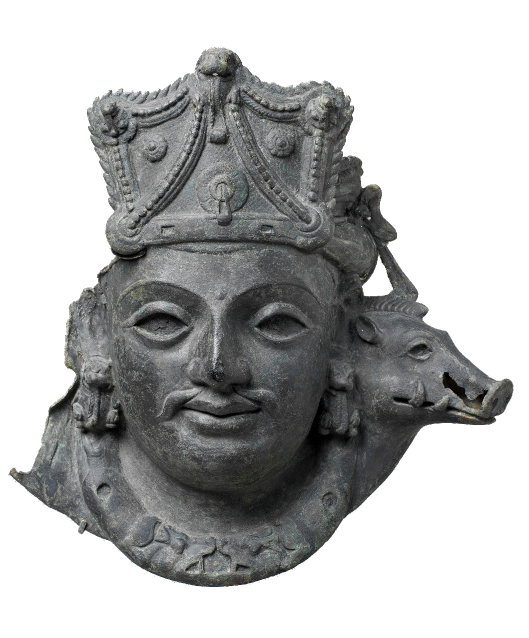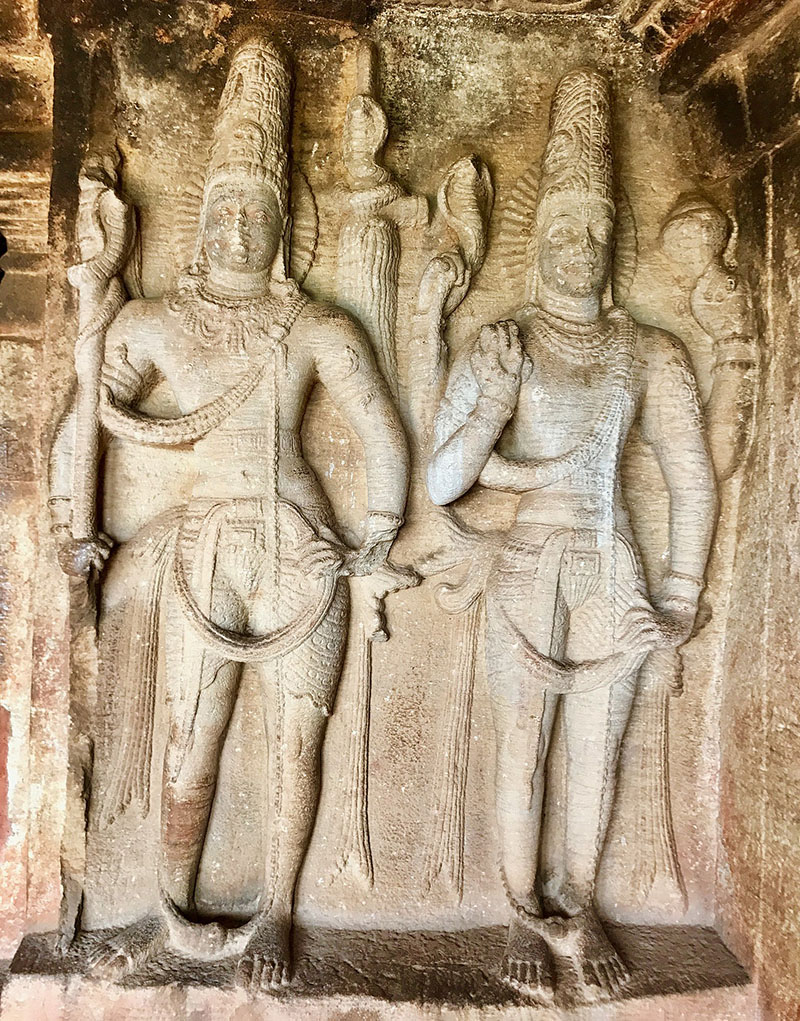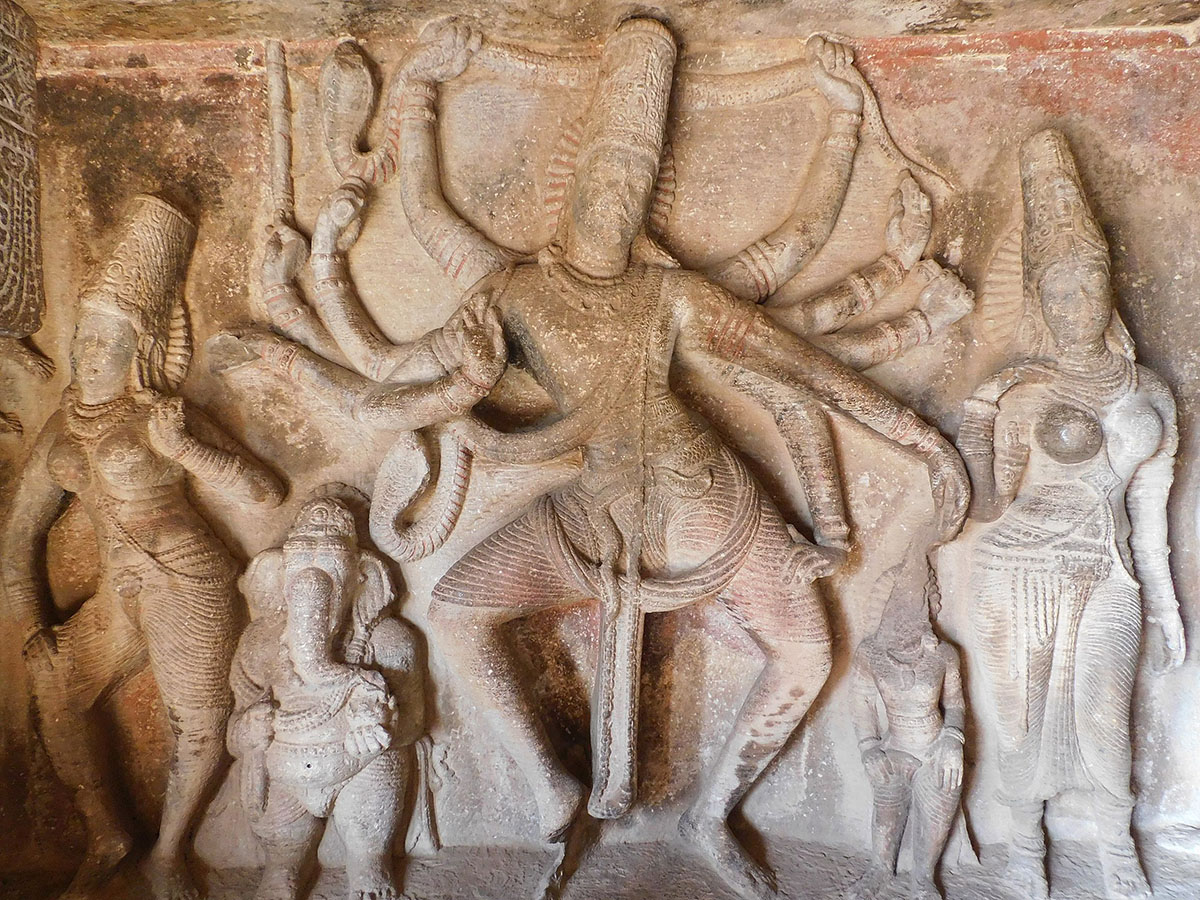ARTICLE
Ravanaphadi Cave, Aihole
The Ravanaphadi cave is unprecedented in terms of both style and subject. The complexity of its iconographic programme may be seen as a precedent to later Deccan cave-temples as well as freestanding shrines. Scholars have suggested that one of the objectives of the cave was to incorporate the pre-existing iconography of the Saptamatrikas into a Chalukya royal shrine, as it is around this time that Chalukya inscriptions begin to claim that the dynasty was favoured by these goddesses. The scene of Shiva dancing may thus be understood as following his defeat of the demon Andhakasura, an endeavour for which the Saptamatrikas were created to assist him.
The panel assumes further political significance in the light of the Chalukyas’ defeat of their rivals, the Kadambas. The Kadambas prominently featured the Saptamatrikas in their shrines and inscriptions. Their depiction in this cave may thus be read as a sign of Chalukya dominance and the appropriation of the icons of their defeated enemies, especially since earlier Chalukya temples such as Cave 1 at Badami give prominence to Kartikeya.
Bibliography
Our website is currently undergoing maintenance and re-design, due to which we have had to take down some of our bibliographies. While these will be re-published shortly, you can request references for specific articles by writing to hellomapacademy@map-india.org.







![The façade of the Maneckji Seth Agiary, a Zoroastrian fire temple, is a standout example of the popularity of the Persian Revival Style in Western India in the 19th and 20th centuries. This style was often seen in the architectural patronage of the Parsis, who emerged as one of the most influential mercantile communities of British India. Popular motifs of this style, like the mythical lamasus (winged bulls with human heads) and the faravahar (a winged guardian spirit in Zoroastrianism), drew on the historical art and architecture of the Achaemenid and Sasanian empires from sites like Persepolis, Bisotun, Taq-e Bostan, Naqsh-e Rostam and Naqsh-e Rajab in Persia.
The Parsi community’s adoption of this style occurred largely due to their networks of global commerce and politics, allowing them to access and translate research of ancient Persia into visible symbols that underlined their association with antiquity, imperial power, and art.
نمای آتشکدهی زرتشتی مانِکجی سِت نمونهی بارزی از رواج سبک «احیای [معماری] ایرانی» در غرب هند طی سدههای نوزدهم و بیستم است. این سبک غالباً در بناهایی دیده میشد که پارسیان، از بانفوذترین جوامع بازرگان در هند بریتانیا، بانیشان بودند. نقشمایههای محبوب این سبک، مانند گاو بالدار اساطیری (لاماسو) و فَروَهَر (روح بالدار نگهبان در دین زرتشت)، برگرفته از هنر و معماری شاهنشاهی هخامنشی و ساسانی، در جاهایی چون تخت جمشید و بیستون و طاق بستان و نقش رستم و نقش رجب، بود.
اقتباس جامعهی پارسیان از این سبک بسیار مرهون روابط گستردهی تجاری و سیاسی آنها بود که دسترس به پژوهشها دربارهی ایران باستان و برگردانیدن آنها به نمادهای بصری را ممکن میکرد و بر پیوند پارسیان با دوران باستان و قدرت شاهنشاهی و هنر تأکید میکرد.](https://mapacademy.io/wp-content/plugins/instagram-feed/img/placeholder.png)
